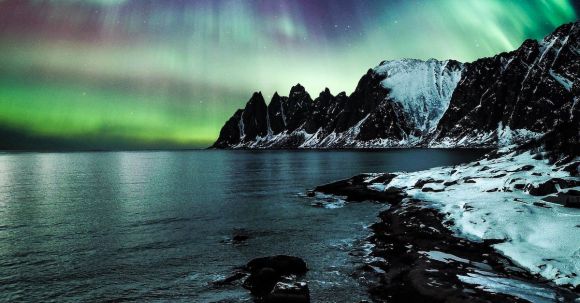The Aurora Borealis, also known as the Northern Lights, is a breathtaking natural phenomenon that lights up the night sky with vibrant colors. This captivating display of lights has fascinated people for centuries, but what exactly causes this beautiful spectacle? In this article, we will explore the science behind the Aurora Borealis and unravel the secrets of its origin.
The Solar Wind: A Cosmic Dance of Particles
At the heart of the Aurora Borealis lies the interaction between Earth’s magnetic field and the solar wind. The solar wind is a continuous stream of charged particles, mainly electrons and protons, ejected from the Sun’s surface. As the solar wind reaches Earth, it encounters our planet’s magnetic field.
The Magnetosphere: Earth’s Invisible Shield
Earth’s magnetic field, also known as the magnetosphere, acts as a protective shield against the solar wind. It stretches out into space and forms a barrier that deflects most of the charged particles away from our planet. However, some particles manage to breach this shield and enter the magnetosphere.
The Dancing Particles: Excited Atoms and Molecules
When these charged particles from the solar wind collide with atoms and molecules in Earth’s atmosphere, an extraordinary chain of events is set in motion. The collisions excite the atoms and molecules, causing them to become energized. This energy is later released in the form of light.
The Colorful Dance: Different Gases, Different Colors
The colors we see in the Aurora Borealis are a result of the type of gas being excited and the altitude at which the collision occurs. Oxygen molecules, when excited, emit green and red light, giving rise to the most common colors seen in the Northern Lights. Nitrogen molecules, on the other hand, produce blue and purple hues.
The Location Matters: The Poles as a Stage
The Aurora Borealis is predominantly visible near the Earth’s polar regions, hence the name “Northern Lights.” This is because the magnetosphere is weaker at the poles, allowing more charged particles to enter and interact with the atmosphere. The exact location and intensity of the Aurora Borealis depend on various factors, including solar activity and Earth’s magnetic field fluctuations.
Solar Storms: Boosting the Light Show
Solar storms, or coronal mass ejections, can greatly enhance the intensity and visibility of the Aurora Borealis. These storms occur when the Sun releases enormous amounts of charged particles into space. When these particles reach Earth, they can create a more dazzling display of lights, expanding the range of colors and increasing the geographical extent of the phenomenon.
Capturing the Magic: Photographing the Aurora Borealis
The Aurora Borealis is a popular subject for photographers, and capturing its beauty can be a challenging yet rewarding experience. To photograph the Northern Lights, a long exposure is typically used to capture the faint light emitted by the excited particles. Patience and a clear, dark sky are essential for successful Aurora photography.
Appreciating the Wonder: A Natural Spectacle
The Aurora Borealis is a testament to the wonders of our universe, reminding us of the intricate dance between the Sun, Earth, and the cosmos. It serves as a captivating reminder of the beauty and power of nature, bringing joy and awe to those lucky enough to witness it.
In conclusion, the Aurora Borealis, or Northern Lights, is a mesmerizing natural phenomenon that occurs when charged particles from the solar wind interact with Earth’s magnetic field. This interaction excites atoms and molecules in the atmosphere, resulting in the colorful display of lights we admire. The location, gases involved, and solar activity all play a role in shaping the intensity and appearance of the Aurora Borealis. Whether viewed in person or through the lens of a camera, the Northern Lights continue to captivate and inspire us with their ethereal beauty.





